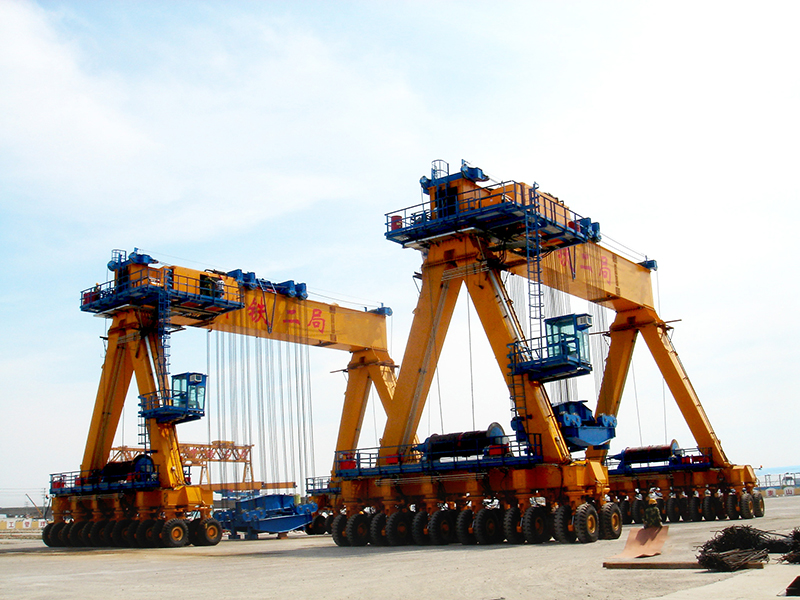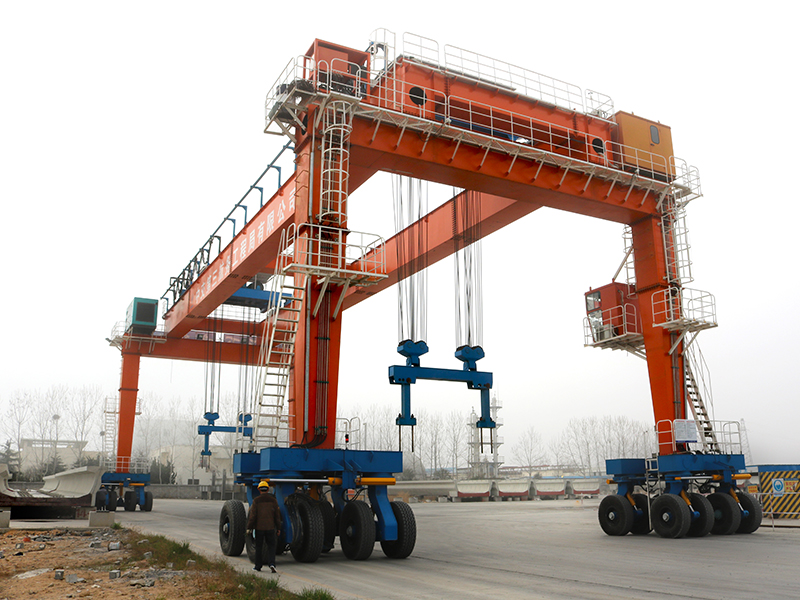In the realm of material handling and logistics, the efficiency and flexibility of equipment play a pivotal role in ensuring smooth operations. One such innovation that has revolutionized port and container handling is the rubber gantry crane (RGC). Unlike traditional gantry cranes, which are often fixed to a specific location, RGCs boast remarkable mobility, allowing them to navigate container yards with ease. In this article, we will delve into the various aspects of the mobility of rubber gantry cranes and explore how this feature contributes to the optimization of cargo handling processes.

Understanding Rubber Gantry Cranes
Rubber gantry cranes, also known as rubber-tired gantry cranes (RTGs), are a type of mobile gantry crane commonly used in container terminals and intermodal yards. Unlike their rail-mounted counterparts, RGCs are equipped with rubber tires, providing them with the ability to traverse the container yard independently. This mobility is a game-changer in the logistics industry, offering several advantages that contribute to increased efficiency and operational flexibility.
Mobility Features of Rubber Tyre Gantry Crane
Rubber Tires: The primary feature that grants RGCs their mobility is the presence of rubber tires. These tires allow the crane to move freely across the container yard without the need for fixed tracks or rails. The rubber tires also contribute to lower maintenance costs and increased operational flexibility, as the crane can easily change its path or location as required.
All-Wheel Steering: To enhance maneuverability, many rubber gantry cranes are equipped with all-wheel steering systems. This allows the crane to rotate on the spot, navigate tight corners, and align itself precisely with containers. The all-wheel steering feature is particularly valuable in crowded container yards where space optimization is crucial for efficient operations.
Variable Speed Control: RGCs come with variable speed control, allowing operators to adjust the crane’s speed based on the specific task at hand. This feature is instrumental in maintaining safety and precision during container handling operations. The ability to control the speed also contributes to fuel efficiency and reduces wear and tear on the equipment.

Operational Advantages of Rubber Gantry Cranes
Dynamic Container Handling: The mobility of rubber gantry cranes enables dynamic container handling. These cranes can easily navigate between rows of containers to locate and lift the required cargo. This flexibility is particularly valuable in terminals with a high volume of container traffic, where efficient handling and quick turnaround times are paramount.
Optimized Yard Layout: Unlike traditional gantry cranes that require fixed tracks, RGCs can operate in a yard with a flexible layout. This allows terminal operators to optimize the arrangement of containers, ensuring efficient use of space and reducing congestion. The ability to adapt to changing yard configurations enhances overall operational efficiency.
Reduced Downtime: The mobility of rubber gantry cranes contributes to reduced downtime during maintenance and repair activities. Since RGCs can move independently, they can be relocated to a maintenance area without disrupting the entire yard’s operations. This feature minimizes the impact on overall productivity and allows for more streamlined maintenance schedules.
Quick Container Stacking and Unstacking: The agile movement of RGCs facilitates rapid stacking and unstacking of containers. This is particularly crucial in situations where containers need to be rearranged to accommodate new arrivals or to optimize the yard space. The ability to swiftly reposition containers contributes to a more agile and responsive container handling process.
Environmental and Economic Impact of Rubber Gantry Cranes
Fuel Efficiency: Rubber gantry cranes are designed with fuel efficiency in mind. The ability to move independently without relying on fixed tracks reduces energy consumption compared to traditional gantry cranes. This not only lowers operational costs but also aligns with the growing emphasis on sustainability in the logistics industry.
Emission Reduction: The mobility of RGCs contributes to a reduction in emissions associated with container handling operations. By optimizing routes and minimizing unnecessary movements, these cranes help mitigate the environmental impact of port and terminal activities. This aligns with the global push for greener and more sustainable practices in the transportation sector.
Conclusion
In conclusion, the mobility of rubber gantry cranes has significantly transformed container handling operations in ports and terminals. The combination of rubber tires, all-wheel steering, and variable speed control provides these cranes with unparalleled flexibility and maneuverability. The operational advantages, including dynamic container handling, optimized yard layout, and reduced downtime, make RGCs a vital component in the logistics chain.
As the demand for efficient and sustainable cargo handling solutions continues to rise, the mobility of Aicrane rubber gantry cranes stands out as a key enabler of streamlined operations. Terminal operators and logistics professionals worldwide are increasingly recognizing the value of this innovation in enhancing overall efficiency, reducing environmental impact, and ultimately driving economic benefits in the ever-evolving landscape of global trade and transportation.